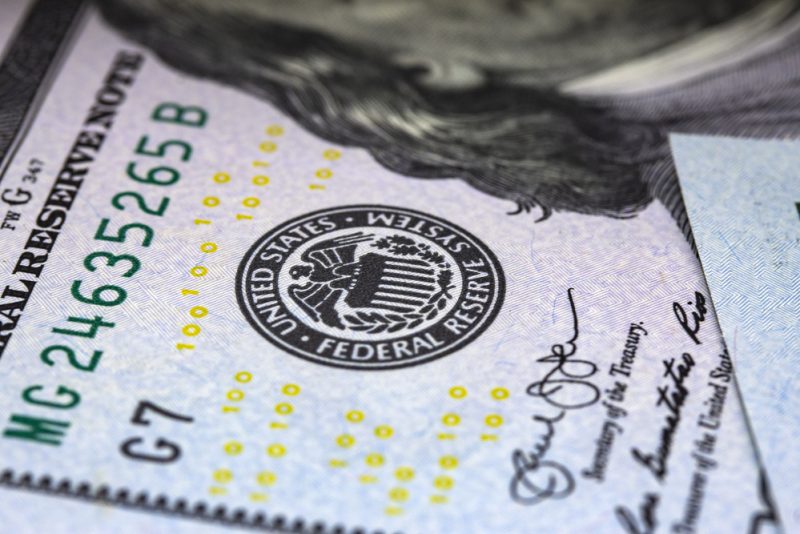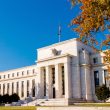Yesterday, the President and Chief Executive Officer of the Federal Reserve Bank of New York (the largest among all 12 banks) – John Williams, addressed the effect of recent interest rate rises on the economy. He pointed out that it would take time for the measures taken by the Federal Open Market Committee (FOMC) to bring the economy back into balance and drive inflation down towards its 2% target. Williams also touched upon the present challenges the banking sector is facing. This article will examine his comments, reflecting on possible implications for the US economy.
Future interest rate hikes
The CEO expressed his projection that it would still require time for the economy to adjust to the new level of interest rate when the inflation stabilizes at a more manageable level. He did not make a prediction as to where he sees the policy headed, mentioning however that he doesn’t see the inflation returning to the Fed’s 2% annual target within the next two years. At the same time, Williams asserted that the Fed always has the option of raising rates going forward, if the inflation does not decline. He emphasized that there is always a time lag between policy decisions and their outcomes, so getting control back over the economy will still remain a lasting effort.
When speaking about the prospects of raising the policy rates in the future, Williams added that FOMC has not yet announced if it’s done with the rate hikes and so will continue the efforts towards achieving its objectives. The CEO made clear that they would evaluate the state of the economy and base their decisions on that data. According to him, there is no justification for lowering interest rates this year, and further rate increases are feasible provided uncooperative economic data.
These remarks came less than a week after the FOMC’s benchmark rate increase decision, pushing the latter up by a quarter percentage point, to a range of 5%-5.25% – the highest level since 2007. In its statement following the last FOMC meeting, the committee intimated that policy rate increases would be put on hold, adding however that the authorities will consider a number of other variables before making their decision. The committee changed a crucial part of the statement implying more increases could be appropriate.
President John Williams also discussed the state of unemployment in the US economy. He stated that it is likely to rise to a 4%-4.5% range, from its current 54-year low of 3.4%. This increase in unemployment is a concern for the country’s economy and the policy maker’s outlook.
Current strengths and weaknesses in the banking industry
Meanwhile, the executive also cited some positive signs in the economy, including moderation in longer-term inflation expectations and a cooling in demand for labor that has heated the jobs market and put upward pressure on wages. However, he emphasized that wages have failed to keep up with cost-of-living increases. Williams also stated that clogged labor chains, which have been a major inflation contributor, have “improved considerably” over time.
He also referred to the current problems in the banking industry and their impact on his policy outlook, stating that he will be particularly focused on assessing the evolution of credit conditions and their effects on the outlook for growth, employment, and inflation. This emphasis on the banking industry indicates that Williams is well aware of the potential risks and potential problems that may arise from this economic sector going forward.
Final thoughts
Actually, the CEO’s comprehensive remarks are a reflection of the Federal Reserve’s cautious approach to the interest rate policy. The Federal Reserve is obviously trying its best in balancing the control over inflation with the risk of overly slowing the economy. At the same time, the future policy of the Fed will be strongly influenced by the current issues of the banking industry and the effect those may have on credit conditions.
As Williams highlighted, resolving the current imbalances within the US economy and returning the inflation to its target level of 2% will not happen overnight. This means that investors should be prepared for a prolonged period of uncertainty and volatility in the financial markets. At the same time, however, the positive outlook on moderating longer-term inflation expectations along with the improvement in labor chain issues could be a source of some relief for investors.
Overall, it was made clear that the Federal Reserve will continue to carefully observe economic data and be ready to modify its stance accordingly if required. Therefore, investors should remain on alert, ready to adjust their portfolios in response to shifting market conditions.
WeInvests is a financial portal-based research agency. We do our utmost best to offer reliable and unbiased information about crypto, finance, trading and stocks. However, we do not offer financial advice and users should always carry out their own research.
Read More









